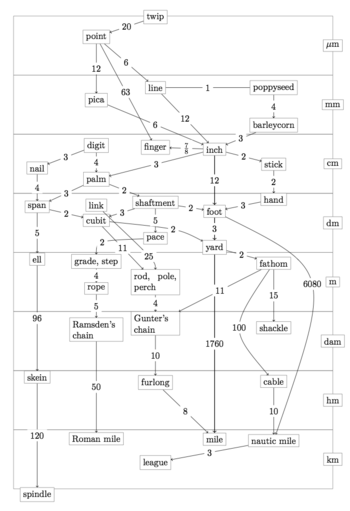Barleycorn (unit)

The barleycorn was a small English unit of length[1] and is still used in Great Britain and Ireland as a determiner of shoe sizes.
History
Under the c. AD 1300 Composition of Yards and Perches, one of the statutes of uncertain date that was notionally in force until the 1824 Weights and Measures Act, "3 barly cornes dry and rounde" were to serve as the basis for the inch and thence the larger units of feet, yards, perches and thus of the acre, an important unit of area. The notion of 3 barleycorns composing an inch certainly predates this statute, however, appearing in the 10th-century Welsh Laws of Hywel Dda.
In practice, various weights and measures acts of the English kings were standardized with reference to some particular yard-length iron, brass, or bronze bar held by the king or the Royal Exchequer. The formal barleycorn was 1/108 of its length.[2]
The English statute notwithstanding, the barleycorn was also frequently taken as a measure of length equal to 1/4 inch.[3]
British and Irish shoe sizes differ from one another by the distance of a barleycorn.
See also
- line, 1/4 of a barleycorn or 1/10 of an inch
- poppyseed, 1/4 or 1/5 of a barleycorn
References
- ↑ "Barley corn", Britannica, Edinburgh, 1769
- ↑ Zupko, Ronald Edward (1977). British Weights and Measures: A History from Antiquity to the Seventeenth Century. Madison, Wisconsin: University of Wisconsin Press. p. 21. ISBN 978-0-299-07340-4.
- ↑ OED. "barley-corn, n.".